Table of Contents
Table of Contents
The point of sale (POS) is the heart of most transaction-based businesses. However, out of the box they are often missing crucial capabilities. That’s where integrations come in. From security to inventory management, payment processing, and marketing, POS integrations can make your business more profitable.
See how a Solink POS integration brings new operational insights to businesses in all industries.
What is a POS integration?
A POS integration links your point of sale (POS) system with other tools your business uses. Whether it’s security, like what Solink offers, or staff scheduling, these integrations make running your business easier. Let’s dive into what makes POS integrations a must-have for modern businesses.
At a technical level, a POS integration typically consists of the following:
- Extraction of the data from the source (e.g., a direct connection to the POS or through an SFTP server, emails, APIs, etc.).
- Transformation of the received data into a different format that adheres to the standards of the integrated software.
- Loading the data into the POS integration’s database, where it can be searched by users of the integrated software.
- Repeating the process at a set frequency (e.g., real time, hourly, daily, etc.).
Why do POS systems integrate with other software?
One major reason POS systems integrate with other software is to expand their customer base. By offering a range of integrations, from security features like those Solink provides to delivery services, a POS company can appeal to businesses with diverse needs. This added functionality makes the POS system not just a transaction hub, but a versatile business tool.
But why not build these features directly into the POS system? The answer lies in specialization and cost-efficiency. Creating every possible integration in-house would result in a bloated, overly complex system. Not to mention, the development costs would skyrocket, making the POS system prohibitively expensive for many potential customers.
Moreover, not every business needs every type of integration. Some might prioritize delivery services, while others focus on inventory management or employee scheduling. By allowing for third-party integrations, POS companies can offer a more tailored, affordable solution to their customers.
How do POS integrations work?
POS integrations require a way of transmitting data from the POS to the integrated software and vice versa. Depending on the integration, the POS system, how data heavy that communication needs to be, and other factors, there are several different ways to integrate with a POS.
Here are the five main types of integrations:
- Webhook
- File-based (e.g., xml, json, csv, xlsx, email, and sftp)
- API
- Local (e.g., TCP and database)
- Other (e.g., human intervention, PDF files, Web scrap, and SNS)
With over 200 integration partners, Solink has used all of these integration types with different POS systems.
Webhook POS integrations
A webhook is an API concept. It’s a way for an app to provide other applications with real-time information. A webhook delivers data to other applications as it happens, meaning you get data immediately. It’s unlike typical APIs where you would need to poll for data very frequently to get it real time. This makes webhooks much more efficient for both provider and consumer.
Webhooks communicate over a web protocol—HTTP in almost all cases.
File-based POS integrations
File-based integrations rely on either retrieving or being sent a file. Files can be in many different formats and structures. As long as the format remains consistent, the POS integration can “map” the data to the necessary fields in their software. If the files are changed, then the POS integration’s mapping may no longer be accurate. In fact, some of these changes can break the integration completely.
API POS integrations
APIs are mechanisms that enable two software components to communicate with each other using a set of definitions and protocols. For example, the weather bureau’s software system contains daily weather data. The weather app on your phone “talks” to this system via APIs and shows you daily weather updates on your phone.
The most basic principle of an API is the request/response structure. Neither side is fully exposed to each other and the only data that is shared is the data that the POS integration is authorized to receive and the data that it requests. Adding new data points and functionality is limited to what the provider makes available and what the integrated software is authorized to access.
Local POS integrations
Local Integrations are when a physical device is directly connected to the POS. They allow a near real-time integration of the data because the parser runs directly from the device installed on site. This is more common for non-software POS integrations, such as third-party scanners.
Other
While the above POS integrations are cleaner and more straightforward, not every POS system is designed to allow for integrations. In these cases, software engineers use more creative solutions.
Here are three examples:
- PDF Files: PDFs are nice to look at for a human but don’t convert easily or predictably for reliable parsing by a computer. This can require text converters to get the right data for the POS integration.
- Web scrape: Specify a URL, and extract the relevant parts from the web site HTML code, assuming the site hasn’t changed too much. This can be a really effective solution.
- Human intervention: The way the data is stored on some servers does not provide a way for POS integrations to automate the retrieval of data. It requires a human to log in, extract the necessary data, and then manually load it to their servers—for every customer location, one by one. Needless to say, most companies would prefer not to integrate with POS systems this way.
What are the benefits of using an integrated POS system?
One of the top perks of using an integrated POS system is convenience. By linking up various software, businesses can manage multiple aspects of their operations from a single dashboard. This makes tasks like tracking sales, scheduling staff, or POS monitoring more streamlined and less time-consuming.
Enhanced efficiency is another big win. For example, if a restaurant integrates its POS system with a scheduling software like 7Shifts, managers can easily align staff schedules with real-time sales data. This helps in labor cost control and ensures that there’s enough staff during peak hours.
Data accuracy is another benefit. When systems are integrated, there’s less room for human error. For instance, inventory levels automatically update when a sale is made, reducing the risk of overselling or understocking.
40 top POS integrations
Security and loss prevention POS integrations
Starting off, security and loss prevention integrations are crucial for safeguarding your business. Enhanced security can deter theft and other unlawful activities.
The fact is that the point of sale is often called the “point of theft” because of how often it is the focal point of employee theft. There are many forms of theft, and the right security and loss prevention POS integration can help eliminate them.
Solink
Solink brings together cloud video security and analytics in one platform, integrating seamlessly with your POS system without a text inserter for heightened security and loss prevention. Here are two scenarios where Solink can help prevent theft in your business through its POS integration.
Cash handling is an important part of any business and a common point of process failures. By integrating Solink with your POS, you can follow cash moving through your business to prevent any operational shortcomings.
See how Solink helps with cash handling issues.
Discount abuse is a common occurrence. Whether malicious or due to a lack of training, employees often misuse discounts. This hurts margins and leads to a culture of complacency.
Payment processing POS integrations
Square

Square offers an all-in-one POS solution that caters to businesses both big and small. Known for its user-friendly interface, the company provides a variety of hardware and software solutions. Square’s system can integrate seamlessly with other tools, making it a versatile choice for those looking to optimize their payment processing.
Stripe

Stripe is primarily focused on online payment processing, offering robust solutions for businesses operating in the digital space. Customizable and feature-rich, Stripe’s API-driven design allows for a wide array of integrations, including POS systems, making it a versatile choice for modern businesses.
PayPal

PayPal has long been a leader in online payments but has expanded its services to include POS solutions. Its integrated approach allows businesses to manage both online and in-person payments through one unified system. The platform supports multiple payment methods, enhancing flexibility and customer choice.
Braintree

Owned by PayPal, Braintree offers specialized solutions for mobile and web payments. Designed for the needs of modern online businesses, it provides a range of features from split payments to subscription billing. Braintree’s seamless integration with various POS systems makes it a one-stop-shop for payment solutions.
Adyen

Adyen is a global payment solution that focuses on delivering a frictionless payment experience for businesses. It supports multiple currencies and payment methods, making it ideal for companies with an international customer base. Adyen’s POS integrations are also feature-rich, offering customizable payment flows and real-time reporting.
Inventory management POS integrations
Another crucial category is inventory management. This type of integration automates the tracking of goods. It can update in real-time as sales occur, helping to ensure that stock levels are optimal.
Unleashed Software
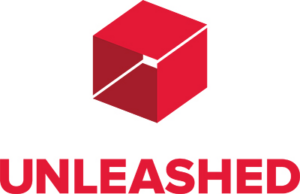
Unleashed Software provides specialized solutions for inventory management. It offers real-time stock control and reporting, helping businesses to maintain optimal inventory levels. The software seamlessly integrates with various POS systems, automating key tasks and reducing manual errors.
Customer relationship management (CRM) POS integrations
CRM integrations facilitate a better understanding of customer behavior. These can sync with your POS system to create profiles for customers, thus aiding in more targeted marketing efforts.
HubSpot

HubSpot’s CRM integrates with various POS systems to help businesses better understand their customers. Through its platform, companies can manage customer data, track interactions, and even execute targeted marketing campaigns. The software is designed for ease of use and offers an array of analytics and reporting tools.
Salesforce
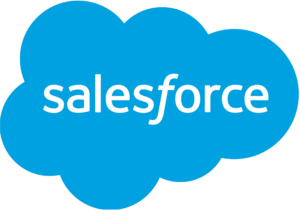
Salesforce offers an expansive CRM solution that covers various aspects of customer relationship management. The platform allows for easy POS integration, which can be particularly useful for businesses that want to combine sales data with customer insights. This helps in tailoring marketing strategies and improving customer engagement.
Zoho CRM

Zoho CRM is designed to meet the needs of small- and medium-sized businesses. It offers a variety of tools to manage customer relations, sales, and even social media interactions. With easy integration options for POS systems, Zoho CRM ensures that customer data flows seamlessly across different platforms.
Freshsales

Freshsales, part of the Freshworks suite, offers a CRM system that prioritizes ease of use and quick setup. This makes it particularly suitable for small and midsize businesses. Integration with POS systems is straightforward, which allows for a unified view of customer interactions and sales data.
Nimble

Nimble offers a simplified CRM solution that focuses on ease of use and quick implementation. It provides basic tools for managing customer relationships, making it ideal for small businesses or startups. The platform also offers an easy integration with various POS systems, streamlining data management and analytics.
Accounting and finance POS integrations
These integrations help automate the flow of transaction data between the POS system and accounting software. As a result, businesses save time and reduce the chance of manual errors in financial reporting.
QuickBooks

QuickBooks provides an all-in-one accounting solution that can be easily integrated with various POS systems. The platform offers a range of features from invoicing to financial reporting, streamlining the accounting process for businesses. QuickBooks supports multiple currencies and can handle complex tax calculations, making it a versatile choice for many companies.
Xero
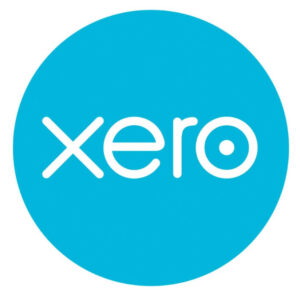
Xero is another major player in the accounting software industry. Designed for ease of use, the platform offers cloud-based accounting solutions that integrate easily with several POS systems. With features like real-time tracking and automated reconciliations, Xero simplifies the accounting process.
FreshBooks

FreshBooks offers cloud-based accounting solutions tailored for small businesses and freelancers. The platform simplifies invoicing, time-tracking, and expense management. Its ease of integration with various POS systems allows for seamless data flow, ensuring that accounting records are always up to date.
Wave

Wave is designed for freelancers and small businesses, offering free accounting software that covers invoicing and expense tracking. While its features may be basic compared to other platforms, it offers POS integration for those who need to sync sales data with their accounting software.
Sage

Sage offers a comprehensive suite of accounting and business management solutions. Its versatility allows for integration with various POS systems, helping businesses manage everything from finances to human resources. With advanced features like multi-currency support and customizable reporting, Sage is suitable for businesses of all sizes.
Employee management and scheduling POS integrations
Some POS integrations help manage employee schedules, hours worked, and even performance metrics. These features are great for both small businesses and larger enterprises.
7shifts

7shifts specializes in employee scheduling and management, specifically tailored for the restaurant industry. It offers a range of tools to make shift planning, communication, and task management more efficient. The platform also integrates seamlessly with various POS systems, allowing managers to track sales and labor data in real time.
Solink integrates with 7shifts, which can help track long employee breaks and other forms of time theft.
Deputy

Deputy provides robust solutions for workforce management, including scheduling, time tracking, and communication. It’s designed to serve various industries and offers POS integration to sync employee hours and sales data. This allows for better labor cost forecasting and more efficient scheduling.
When I Work

When I Work offers simplified solutions for employee scheduling and time tracking. Designed for small and midsize businesses, the platform offers features like shift swapping and time-off requests. It also provides a POS integration, helping businesses to align their staffing needs with sales data.
Homebase

Homebase offers free employee scheduling, time tracking, and team communication tools. The platform is designed for ease of use, making it particularly suitable for small businesses. Homebase integrates with various POS systems, allowing for a unified approach to labor management and sales data tracking.
Ecommerce POS integrations
If you’re operating both an online and a physical store, ecommerce integrations are indispensable. They ensure that inventory and sales data are synchronized across platforms.
WooCommerce
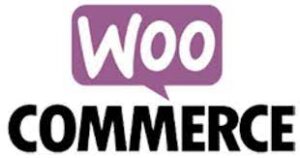
WooCommerce is an open-source ecommerce plugin designed for WordPress websites. It is one of the most popular choices for small to medium businesses who want to quickly set up an online store. WooCommerce offers various POS integration options, allowing businesses to sync their online and physical stores seamlessly.
BigCommerce

BigCommerce is an ecommerce platform that provides a range of customizable templates to help businesses create their online stores. It offers a variety of POS integrations, making it easy for businesses to manage both online and offline sales through a unified system.
Wix

Wix is a website builder that also offers e-commerce capabilities. With its easy-to-use interface, Wix makes it simple for businesses to establish an online presence. The platform offers several POS integrations, allowing businesses to manage inventory and sales across multiple channels.
Shopify

Shopify is one of the most widely used ecommerce platforms, offering businesses a simple way to set up online stores. Its user-friendly interface and numerous customization options make it a favorite among small to large enterprises. Shopify also provides a range of POS integrations, allowing seamless management of both online and physical stores.
Analytics and reporting POS integrations
Tableau

Tableau is a leading analytics and data visualization platform. It offers a variety of integrations, including POS systems, enabling businesses to create customized reports and dashboards. This helps companies better understand their sales data and make informed decisions.
Looker
Looker is another platform specializing in data exploration and business intelligence. It offers a range of tools for analyzing and visualizing data, and it easily integrates with various POS systems. This allows businesses to combine sales and customer data to gain new insights.
Sisense
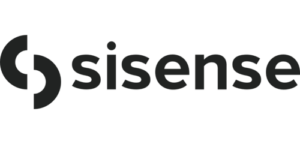
Sisense offers a business intelligence platform aimed at helping companies make sense of complex data from various sources, including POS systems. With its robust analytics tools, businesses can create interactive dashboards to monitor performance and make data-driven decisions.
Domo

Domo is designed to bring together all your business data in one platform. It offers a variety of integrations, including POS systems, to provide real-time analytics and reporting. The platform enables businesses to make quicker decisions by having all necessary data at their fingertips.
Qlik
Qlik provides end-to-end data integration and analytics solutions. It’s designed for businesses that need to consolidate data from various sources, including POS systems. With its data visualization capabilities, Qlik helps businesses make sense of their data and improve decision-making.
Marketing POS integrations
Finally, marketing integrations play a role in elevating your promotional efforts. They allow for seamless execution of campaigns directly from your POS system.
Mailchimp
Mailchimp is primarily an email marketing service but has branched out into other forms of marketing and customer relationship management. It offers a POS integration, allowing businesses to sync customer data and execute targeted marketing campaigns.
ActiveCampaign
ActiveCampaign offers customer experience automation, combining email marketing, automation, sales automation, and CRM. Its POS integration capabilities enable businesses to bring sales data into their marketing efforts, enhancing the customer experience.
Sendinblue

Sendinblue offers a range of marketing tools, including email marketing, SMS campaigns, and marketing automation. It offers POS integration, allowing businesses to sync customer data for more targeted marketing.
GetResponse
GetResponse provides a range of marketing services from email marketing to webinar hosting. Its capabilities for POS integration make it a suitable choice for businesses looking to integrate their marketing efforts with sales data.
Klaviyo
Klaviyo specializes in email and SMS marketing. It offers data-driven insights to help businesses deliver more relevant marketing. Through its POS integration, Klaviyo allows businesses to create personalized, targeted campaigns based on real-time sales data.
Delivery Integration Providers
Delivery integrations are becoming increasingly important for businesses in today’s fast-paced world. Whether it’s a restaurant trying to meet the demands of hungry customers or a retailer fulfilling online orders, seamless delivery is essential. POS integrations with delivery platforms help bridge the gap between the order being placed and the product reaching the customer, ensuring a smooth transaction and improving overall customer experience.
UberEats
UberEats is a popular food delivery service that operates in cities worldwide. The platform’s POS integration capabilities allow for real-time updates between the restaurant’s system and the UberEats app. This integration helps ensure accuracy in orders and streamlines the entire food preparation and delivery process.
DoorDash
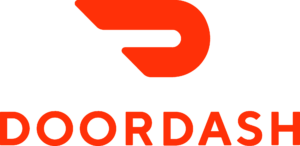
DoorDash is another well-known food delivery service operating in the United States and Canada. Integration with POS systems ensures that, when a customer places an order through the DoorDash app, it directly reflects in the restaurant’s system. This cuts down on manual work and decreases the chances of order errors.
Grubhub
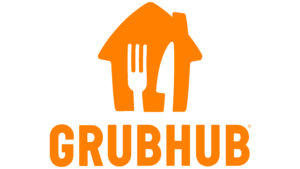
Grubhub is a U.S.-based food ordering and delivery platform that connects diners with local restaurants. The service integrates with various POS systems, allowing for a seamless transfer of orders from the app to the restaurant’s own system. This results in more accurate order processing and more efficient restaurant operations.
Postmates

Postmates is not just restricted to food delivery; it delivers anything from food to alcohol to groceries. The service’s POS integration capabilities allow for a more streamlined and automated ordering process. This enables businesses to fulfill a variety of customer needs without the added complications of manual data entry.
ChowNow

ChowNow specializes in online ordering systems and marketing services for restaurants. Their POS integration ensures that orders placed through their platform are automatically synced with the restaurant’s system. This helps to minimize errors, speeds up the order process, and enhances the customer experience.
Integrate Solink with your POS today
As we’ve explored, integrating your POS system with other software tools is not just a luxury; it’s a necessity for modern businesses seeking to streamline operations, improve efficiency, and enhance customer satisfaction.
Solink stands out as an exceptional choice for anyone looking to bolster their security and loss prevention capabilities. When you integrate Solink with your POS system, you’re adding a layer of robust security and real-time insights that can significantly reduce risks and optimize your operations.
To see how Solink’s POS integration can help all businesses, sign up for a demo today.

Solink stands at the forefront of security solutions, excelling in loss prevention and asset protection for businesses. Our content is rich in industry expertise and crafted to provide actionable insights and innovative strategies. We empower businesses to enhance their security systems, optimize operations, and protect their assets more effectively. Discover how our advanced cloud video management system can transform your security approach.
